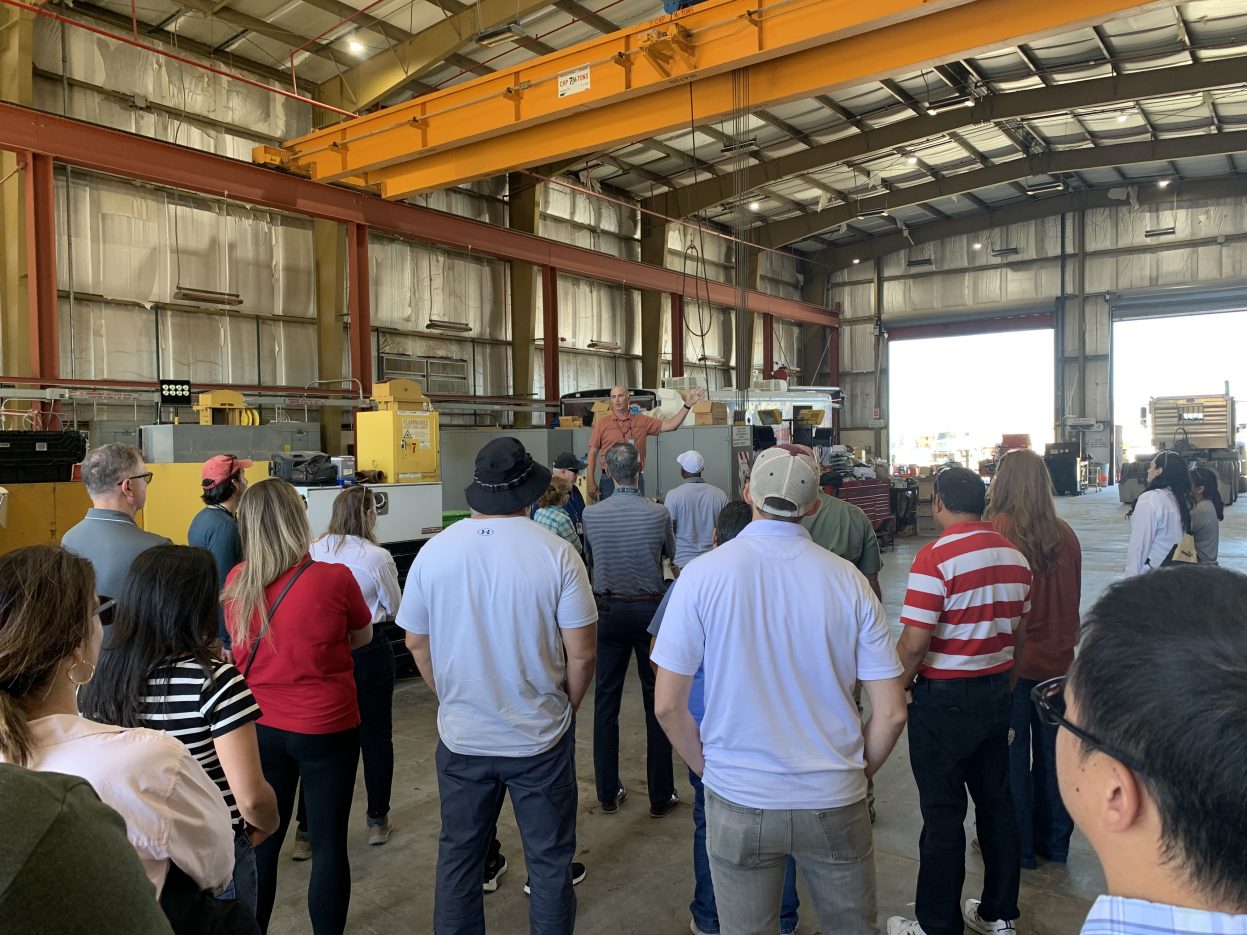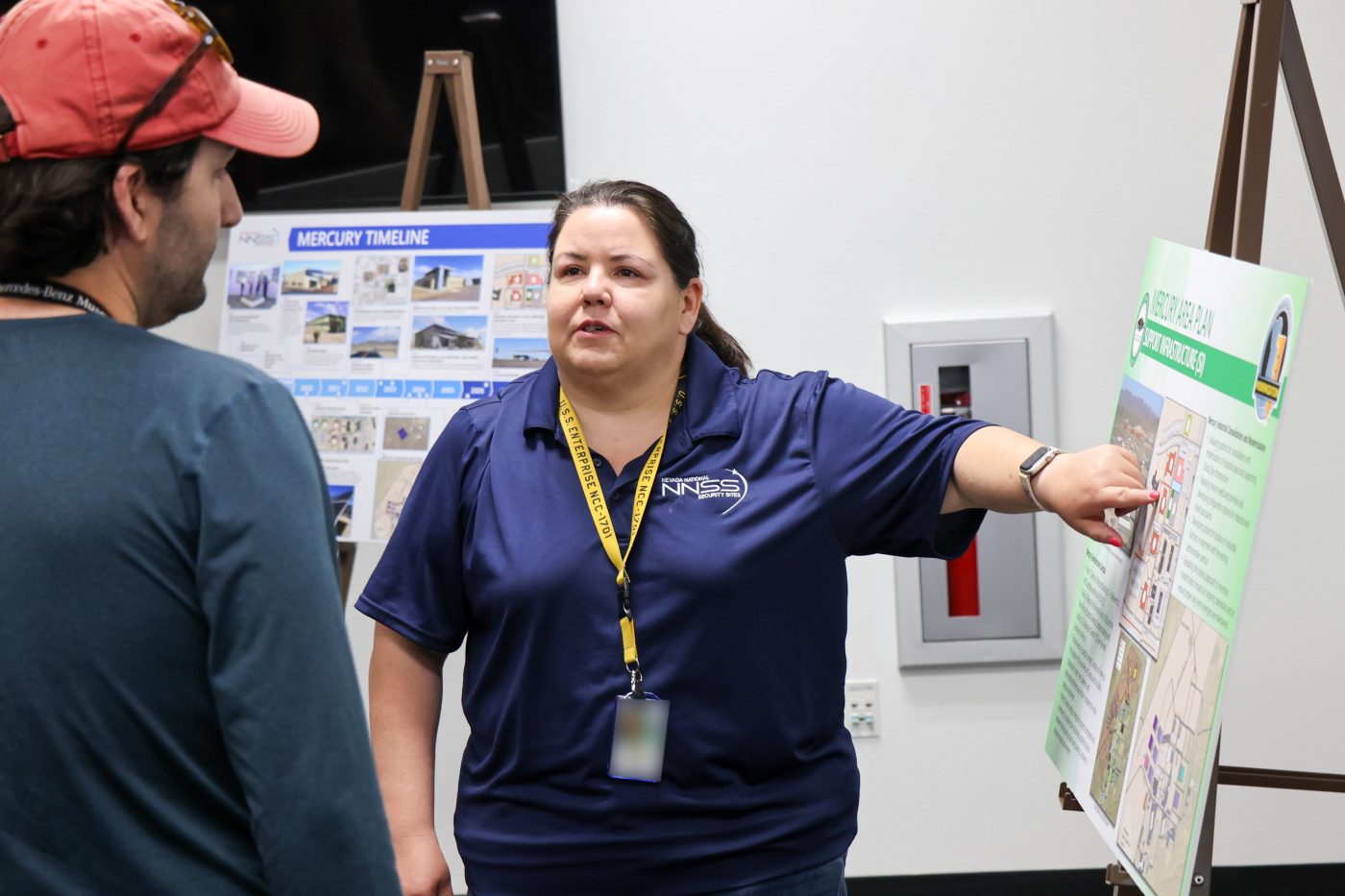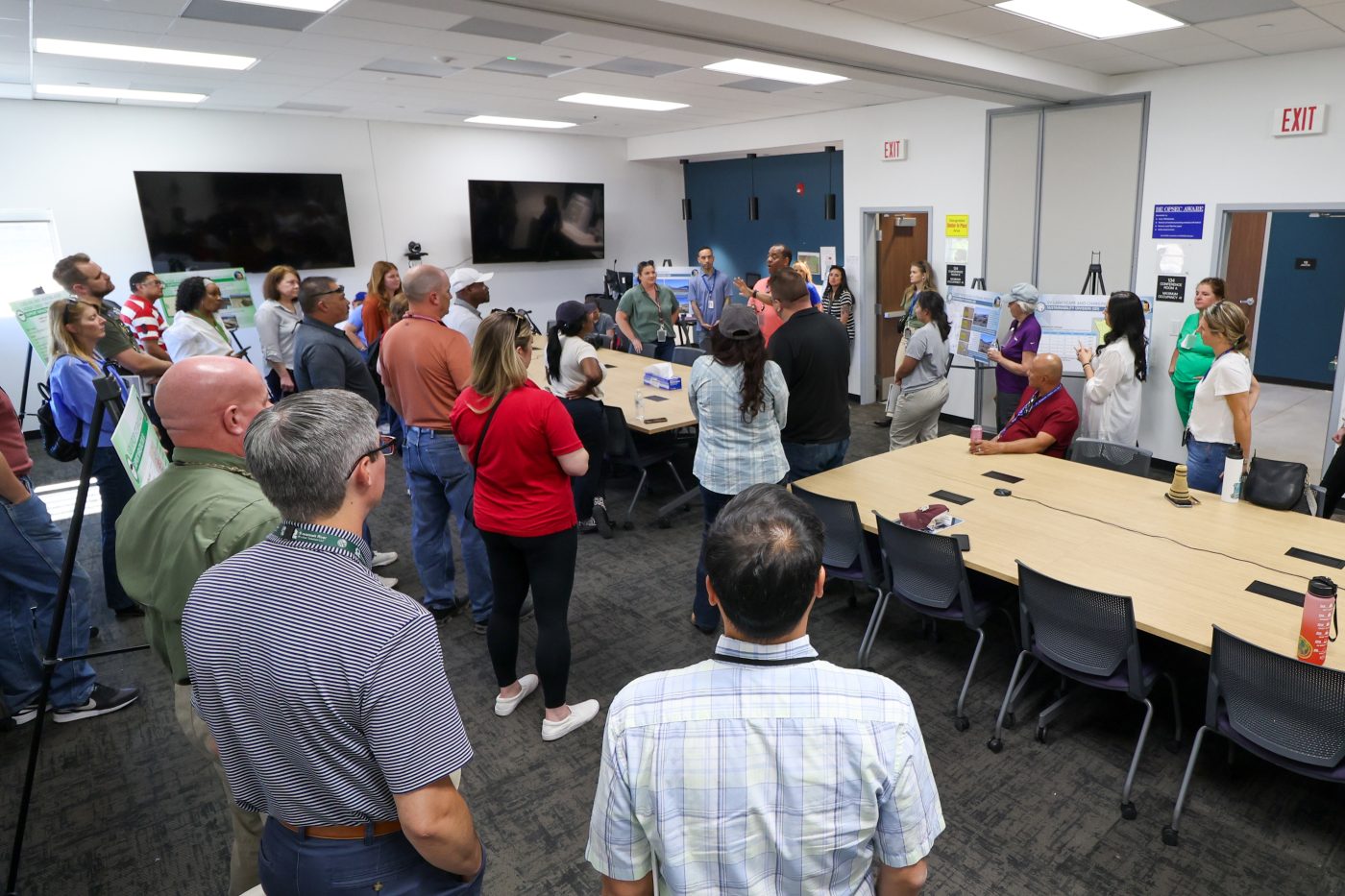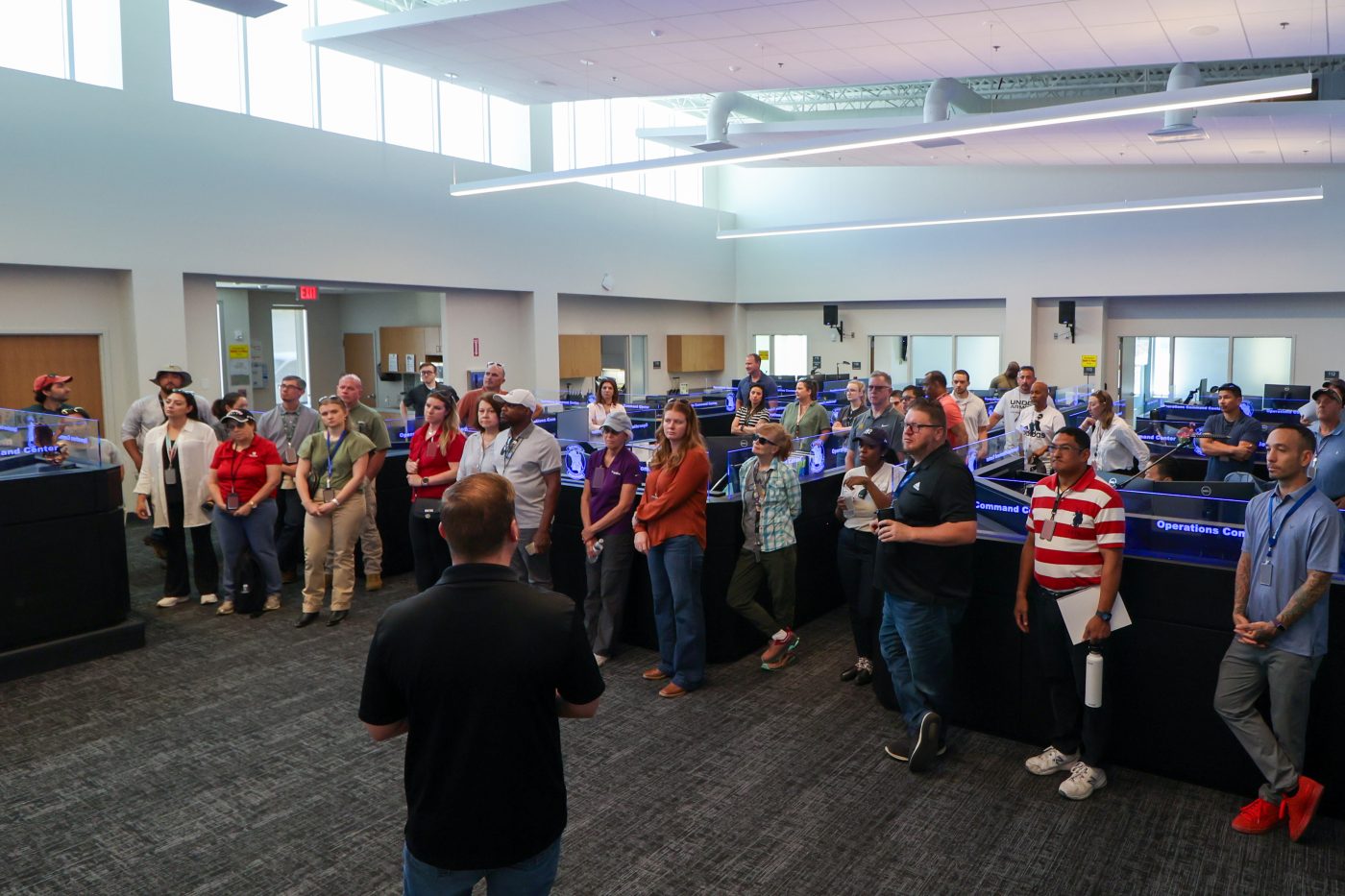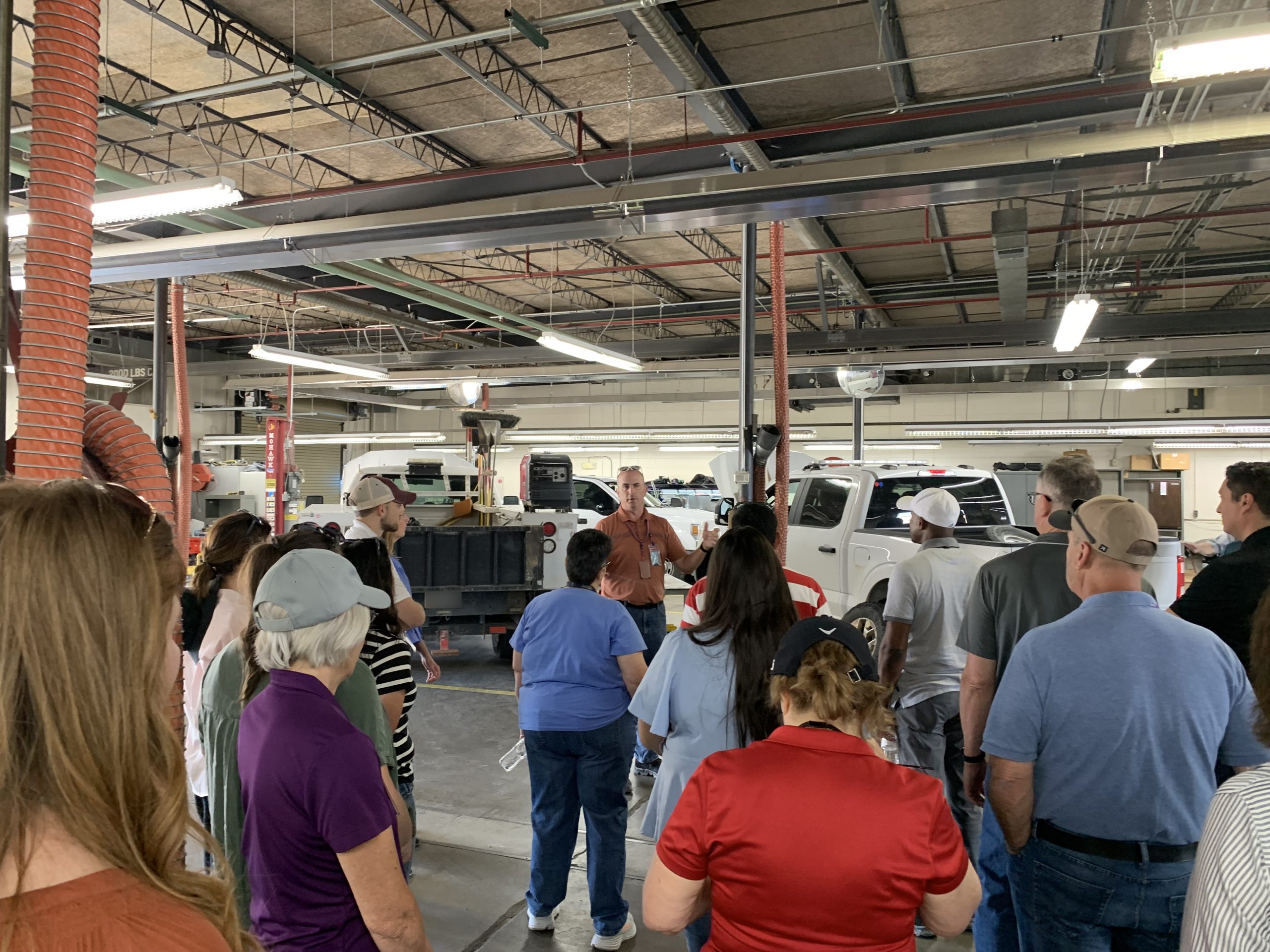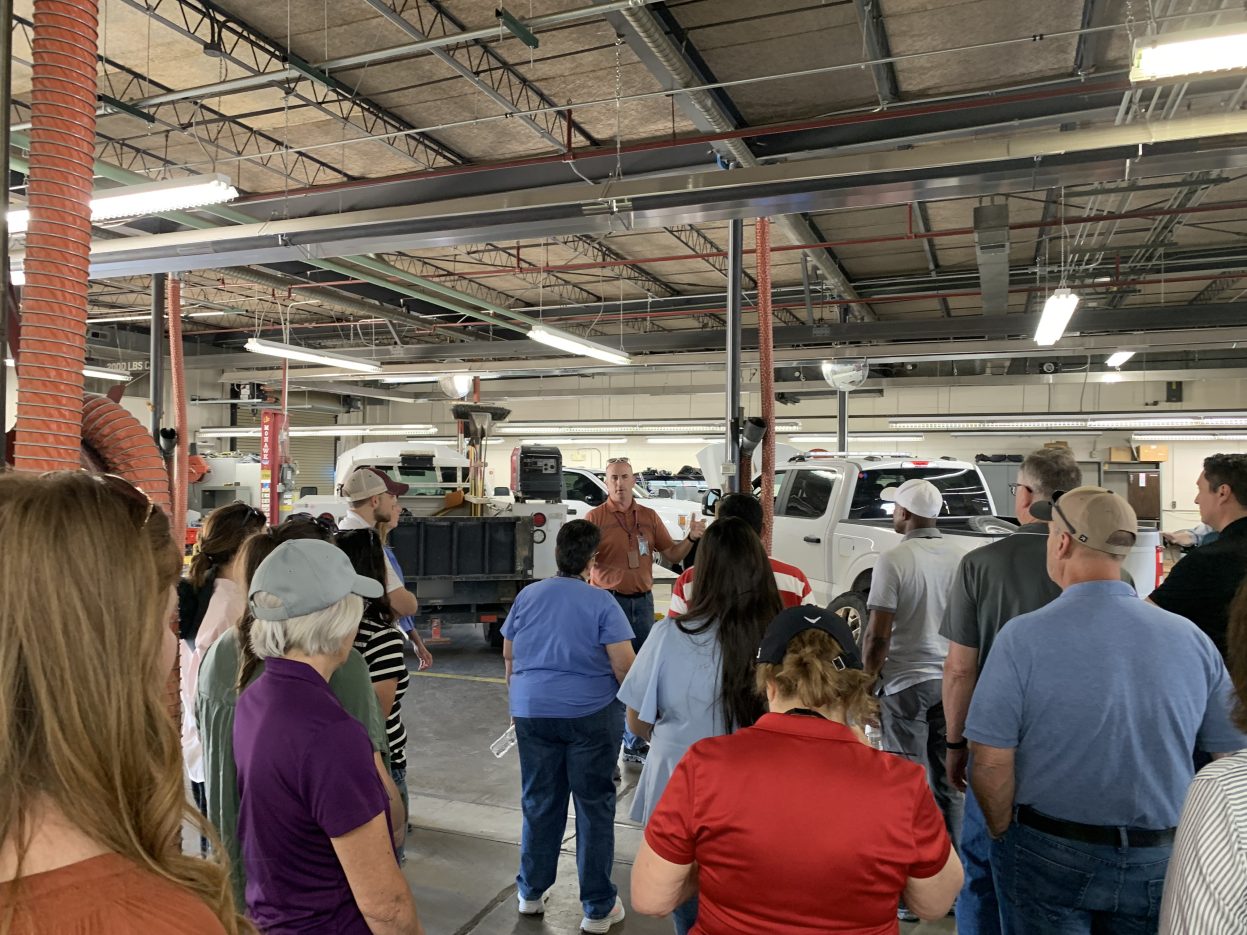A more sustainable and eco-friendlier fleet of cars, trucks, and buses is driving continued efforts toward vehicle electrification at the Nevada National Security Sites (NNSS).
Identified benefits of an electric fleet include improved air quality through a reduction in emissions, increased energy independence, modernized transportation, and the advancement of federal sustainability goals and initiatives.
The conversion to electric vehicles requires substantial planning, funding, coordination, and investment into infrastructure, which includes charging stations. MSTS is dedicated to implementing and executing these plans to increase charging infrastructure, improve perceptions about zero-emission vehicles (ZEVs), dispatch vehicles where applicable and feasible, and support the overall deployment of electric vehicles.
In June, the National Nuclear Security Administration (NNSA) hosted its annual Site Sustainability Summit in Southern Nevada. During a 10-hour tour of the Site, summit attendees were able to observe heavy-fleet and light-fleet operations, which currently includes 87 ZEVs.
“We appreciated the opportunity to show the work we have done in preparation for the move to ZEVs but also what is unique to the NNSS with the sheer size of our site and how spread out our infrastructure is,” said NNSS Fleet & Critical Site Infrastructure Division Manager Matt Boyd. “We are one of the largest sites in the entire enterprise and it was helpful to show our NNSA and other M&O counterparts that in person.”
Prioritization is currently on electrifying NNSS’s light-duty fleet, which includes passenger cars, vans, SUVs, and trucks. Down the road, the focus will shift to medium-duty and heavy-duty vehicles, including special-use vehicles, emergency vehicles, and buses. NNSA is committed to leading by example with a goal of 100% light-duty ZEV acquisition by 2027 and an entirely electric fleet by 2035.
